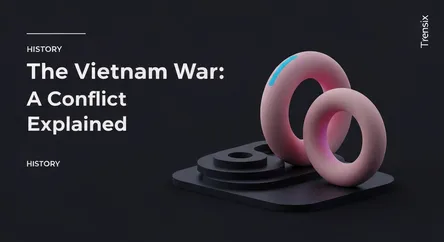History
The Vietnam War: A Conflict Explained

A concise overview of the Vietnam War, a prolonged and divisive conflict that pitted North Vietnam against South Vietnam and its main ally, the United States.
What is it?
The Vietnam War (1955-1975) was a protracted and brutal conflict that pitted the communist government of North Vietnam and its southern allies, the Viet Cong, against South Vietnam and its principal ally, the United States. It was a proxy war during the Cold War, escalating from a Vietnamese anti-colonial struggle against France into a major international conflict. The U.S. involvement was driven by the "domino theory," the belief that if Vietnam fell to communism, neighboring countries would follow. The conflict saw extensive American military intervention, including massive bombing campaigns and the deployment of hundreds of thousands of ground troops.
Why is it trending?
The Vietnam War remains a subject of intense interest and debate due to its profound and lasting impact on society and politics. It was the first televised war, bringing unprecedented images of conflict into American homes and fueling a massive anti-war movement that deeply divided the nation. The war's legacy continues to influence U.S. foreign policy, leading to a phenomenon known as "Vietnam Syndrome," an aversion to overseas military engagements. Decades later, it continues to be explored in films, books, and documentaries, ensuring its relevance to new generations trying to understand its complex lessons.
How does it affect people?
The war's human cost was immense. Estimates suggest that up to 3 million Vietnamese soldiers and civilians were killed. The United States lost over 58,000 service members. Millions of Vietnamese civilians were displaced, and the landscape was devastated by bombing and chemical defoliants like Agent Orange, which caused long-term health problems. For American veterans, returning home was often difficult; many faced public hostility and suffered from post-traumatic stress disorder (PTSD), addiction, and other health issues. The conflict also spurred significant social change in the U.S., including the end of the military draft and a lowered voting age.